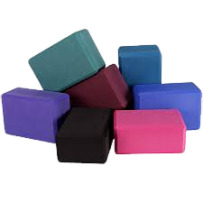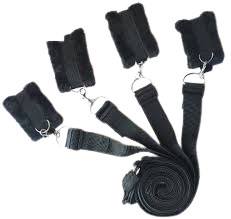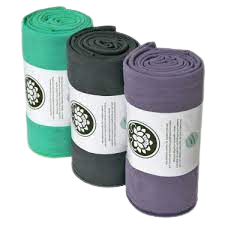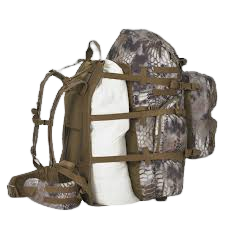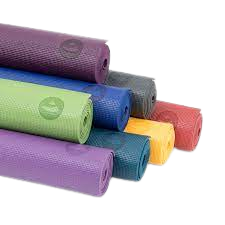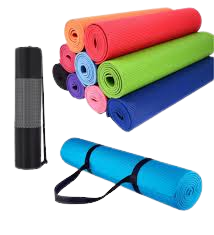Unlocking Potential: A Comprehensive Guide to Yoga Blocks and Their Transformative Role in Practice
Introduction
Yoga, an ancient practice originating in India, has evolved over centuries to become a global phenomenon, embraced by millions for its holistic approach to physical, mental, and spiritual well being. As yoga has gained popularity, so too has the range of accessories designed to enhance and deepen the practice. Among these tools, the unassuming yoga block stands out as a versatile and indispensable aid. In this comprehensive guide, we will delve into the world of yoga blocks, exploring their history, the myriad benefits they offer, and how practitioners of all levels can integrate them into their routines to unlock new dimensions of strength, flexibility, and balance.
A Brief History of Yoga Blocks
To understand the significance of yoga blocks, it’s essential to delve into their historical roots. The practice of yoga has a rich tradition dating back thousands of years, with the earliest written records found in ancient Indian texts like the Vedas and Upanishads. As yoga spread globally in the 20th century, various styles and schools emerged, each with its unique approach to the ancient discipline.
The use of props in yoga, including blocks, gained prominence in the mid 20th century with the advent of Iyengar Yoga, developed by the legendary B.K.S. Iyengar. This style emphasizes precision and alignment, and Iyengar introduced props to help students achieve correct postures and experience the benefits of each pose without strain.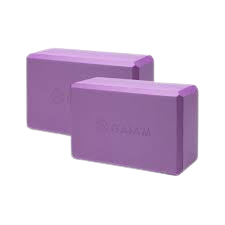
Understanding Yoga Blocks
Yoga blocks, typically made of foam, cork, or wood, come in various shapes and sizes. Understanding the different types of blocks and their materials is crucial for selecting the right ones based on individual needs and preferences.
-
Foam Blocks
- Lightweight and affordable.
- Provide a comfortable grip and are easy to transport.
- Ideal for beginners due to their softness and support.
-
Cork Blocks
- Heavier and denser than foam blocks.
- Offer excellent stability and durability.
- Environmentally friendly and aesthetically pleasing.
-
Wooden Blocks
- Solid and durable.
- Provide a natural feel and aesthetic appeal.
- Heavier than foam but lighter than cork.
The Versatility of Yoga Blocks
One of the key reasons yoga blocks have become a staple in yoga studios and home practices alike is their versatility. From enhancing alignment to aiding in the progression of poses, the applications of yoga blocks are vast and varied.
-
Alignment and Posture
- Using blocks under hands or feet helps achieve proper alignment in standing poses.
- Elevating the hips with blocks in seated poses promotes a straight spine and openness in the hips.
-
Flexibility and Range of Motion
- Blocks are invaluable tools for gradually increasing flexibility by providing support in stretches.
- In forward bends, blocks can be placed under the hands, allowing practitioners to extend their reach and deepen the stretch over time.
-
Balance and Stability
- Balancing poses become more accessible with the added support of blocks.
- Placing a block between the thighs or ankles in certain poses engages stabilizing muscles and improves balance.
-
Proprioception and Awareness
- Yoga blocks serve as aids in developing proprioception, the awareness of one’s body in space.
- Incorporating blocks in various poses encourages mindfulness and a deeper connection to the body.

Yoga Blocks for Different Yoga Styles
While yoga blocks are adaptable to various styles of yoga, some disciplines particularly benefit from their use.
-
Restorative Yoga
- In restorative practices, blocks support the body in gentle, prolonged poses, promoting relaxation and rejuvenation.
- Placing blocks under different parts of the body enhances the therapeutic benefits of restorative poses.
-
Vinyasa Flow
- Yoga blocks seamlessly integrate into dynamic vinyasa sequences, offering stability in challenging transitions.
- They can be used to modify poses for practitioners working on building strength and flexibility.
-
Yin Yoga
- In Yin Yoga, where poses are held for an extended duration, blocks assist in maintaining comfort and proper alignment.
- Supporting the body with blocks allows for a gradual release into deep stretches

Incorporating Yoga Blocks into Your Practice
Whether you’re a seasoned yogi or just starting your journey, integrating yoga blocks into your practice can be a game changer. Here’s a step by step guide on how to make the most of these versatile props
-
Selecting the Right Blocks
- Consider your level of experience, body type, and personal preferences when choosing between foam, cork, or wooden blocks.
- Beginners may prefer the lighter and more forgiving nature of foam, while advanced practitioners might opt for the sturdiness of cork or wood.
-
Starting with Basic Poses
- Begin by incorporating blocks into fundamental poses like Downward Dog, Warrior I, and Warrior II.
- Experiment with different block placements to find the positions that enhance your alignment and comfort.
-
Gradual Progression
- Use blocks as aids in advancing into more challenging poses.
- For instance, in arm balances like Crow Pose, placing blocks under the hands can provide the lift needed to build strength and confidence.

-
Exploring Restorative Practices
- Embrace the restorative power of blocks by incorporating them into restful poses like Supported Child’s Pose and Legs Up the Wall.
- Allow the props to support your body, encouraging relaxation and release.
-
Customizing Your Practice
- Yoga is a deeply personal practice, and the use of blocks allows for customization based on individual needs.
- Adjust block placement and height to cater to your unique anatomy and comfort level.
While yoga blocks are incredibly beneficial, users may encounter challenges in their practice. Here are some common hurdles and strategies for overcoming them
-
Wrist Discomfort
- Some poses may cause discomfort in the wrists, especially when using blocks for support.
- To alleviate this, experiment with hand placement on the blocks and consider using a softer surface like foam.

-
Choosing the Right Height
- Determining the appropriate height for blocks can be tricky.
- Start with the blocks at their highest setting and gradually reduce the height as your flexibility and strength improve.
-
Balancing Acts
- Balancing poses with blocks may initially feel wobbly.
- Develop stability by engaging core muscles and focusing on a steady gaze (drishti) during these poses.
-
Feeling Self Conscious
- Some practitioners may feel self conscious about using props in a group setting.
- Remember that yoga is a personal journey, and the use of blocks is about enhancing your practice, not comparing yourself to others.
-
Rehabilitation from Injuries
- Yoga blocks provide support and aid in rehabilitation after injuries, especially in cases involving the lower back, knees, or shoulders.
- Physical therapists often incorporate blocks into therapeutic exercises to gradually rebuild strength and flexibility.
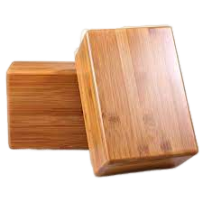
-
Gentle Stretchin
- Individuals recovering from surgeries or injuries can use blocks to facilitate gentle stretching, promoting circulation and preventing stiffness.
- Placing a block under the feet during a seated forward bend, for example, can provide a controlled and supported stretch for the hamstrings.
-
Joint Mobility
- For those with joint issues, blocks can be used to modify poses, allowing for increased joint mobility without undue strain.
- Placing a block under the hands in Downward Dog, for instance, can reduce wrist pressure and make the pose accessible to those with wrist concerns.
The Environmental Impact of Yoga Blocks
As the world becomes increasingly aware of environmental issues, practitioners may seek eco friendly alternatives in their yoga accessories. Considerations for the environmental impact of yoga blocks include:
Sustainable Materials
-
- Opt for blocks made from sustainable materials, such as cork from responsibly managed forests or recycled foam.
Choose brands committed to environmentally friendly practices in their production processes.
Longevity and Durability
-
-
- Invest in high quality blocks that are durable and built to last.
- Products with a longer lifespan contribute less to environmental waste over time.
-
Recyclability
-
-
- Research the recyclability of the materials used in the blocks.
- Choose products that can be recycled at the end of their life cycle, minimizing their impact on landfills.
-
Conclusion
In conclusion, the humble yoga block has evolved from a prop introduced in the mid 20th century to a staple accessory in yoga studios and homes worldwide. Its transformative role in practice extends beyond physical alignment, reaching into the realms of balance, flexibility, stability, and even meditation.
As practitioners continue to explore the depths of their yoga journey, the versatility of yoga blocks provides endless possibilities for customization and growth. Whether you are a beginner seeking support in foundational poses or an advanced yogi refining intricate postures, yoga blocks are tools that adapt to your unique needs.
Moreover, the integration of yoga blocks in physical therapy and rehabilitation underscores their therapeutic value beyond the yoga mat. As awareness of environmental issues grows, the yoga community is also beginning to prioritize sustainable practices in the production and use of accessories, including blocks.
Ultimately, the evolution of yoga blocks mirrors the evolution of the yoga practice itself—a journey of self discovery, growth, and mindful adaptation. By embracing the support and versatility that yoga blocks offer, practitioners can unlock new dimensions of their practice, leading to enhanced well being and a deeper connection to mind, body, and spirit.
